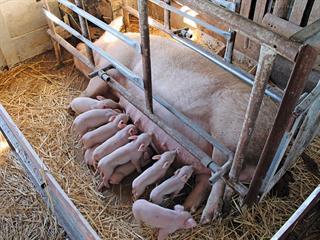Kobus’s crop rotation programme currently consists of five years lucerne, followed by one year wheat, one year wheat or barley, one year lupins or peas, one year wheat, one year wheat or barley, one year canola and another year wheat. He points out that the rotation programme aims at improving soil and production conditions for wheat, which is still the most economically viable crop on the farm. One of the main aims of the rotation programme is to break the monoculture of wheat. This helps prevent and reduce the build-up of wheat-associated diseases in the soil, and also helps in weed management, as weed-control products that can’t be used on grasses such as wheat can be used on legumes. In this way rotation helps reduce herbicide resistance. Lucerne, lupins and peas also have the ability to bind nitrogen, through their symbiotic relationship with the rhyzobium bacteria, helping to increase nitrogen levels in the soil. However, because of recent problems with slugs and isopoda Kobus has planted grazing oats and peas rather than lupins or canola on heavily infected lands.
The oats is grazed by his sheep and chemically fallowed around September. In this way problems with grass herbicides are addressed exactly as if these lands were under canola or lupins. Two years of wheat Kobus points out that his lands’ rising carbon content is making it increasingly difficult to plant malting barley, and he no longer plants it. “This system is not ideal, because it means that you have wheat on the same land for more than one year,” he explains. “To address these problems, I use fast-growing wheat cultivars to prevent ‘take all’ and ‘head blight’. My storage facilities also help, as they help me upgrade the wheat.” The farms are divided into 12 areas – each measuring between 60ha and 90ha – to prevent spray drift from one crop to another and to make planting and harvesting more efficient. These areas are then subdivided into camps of 18ha each.









